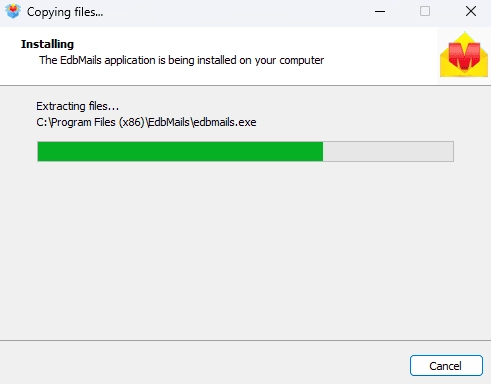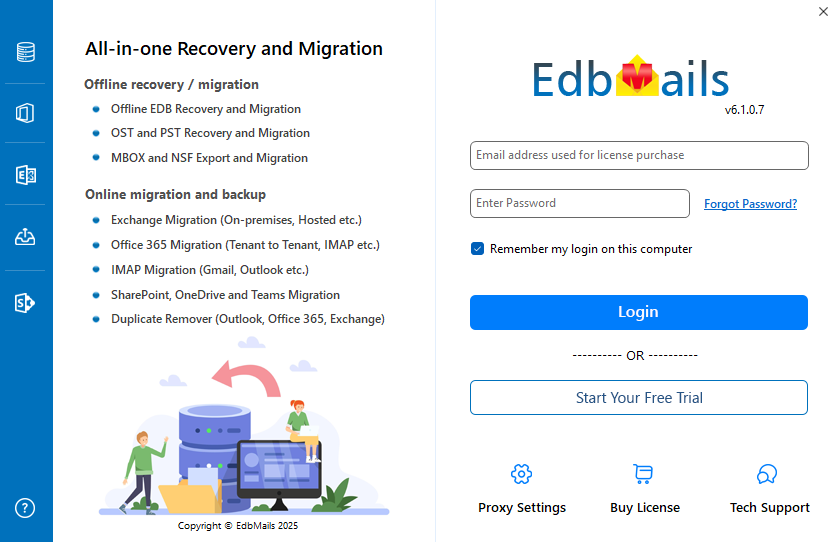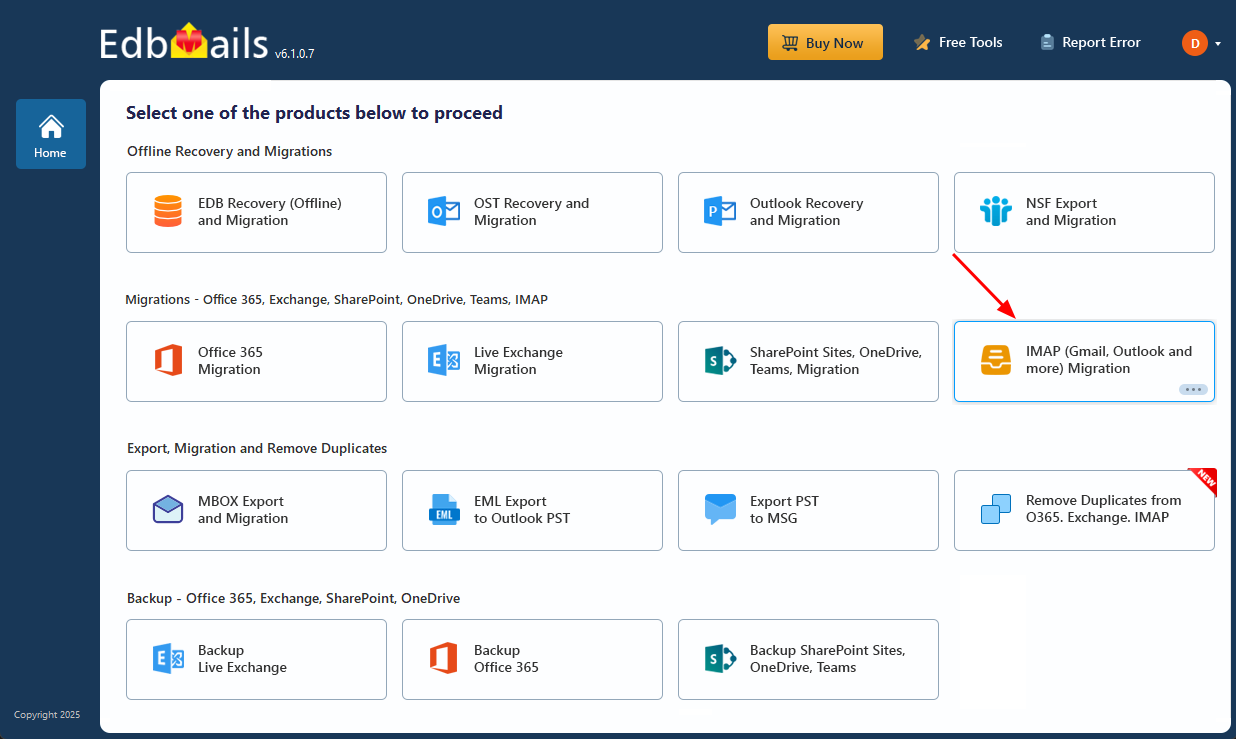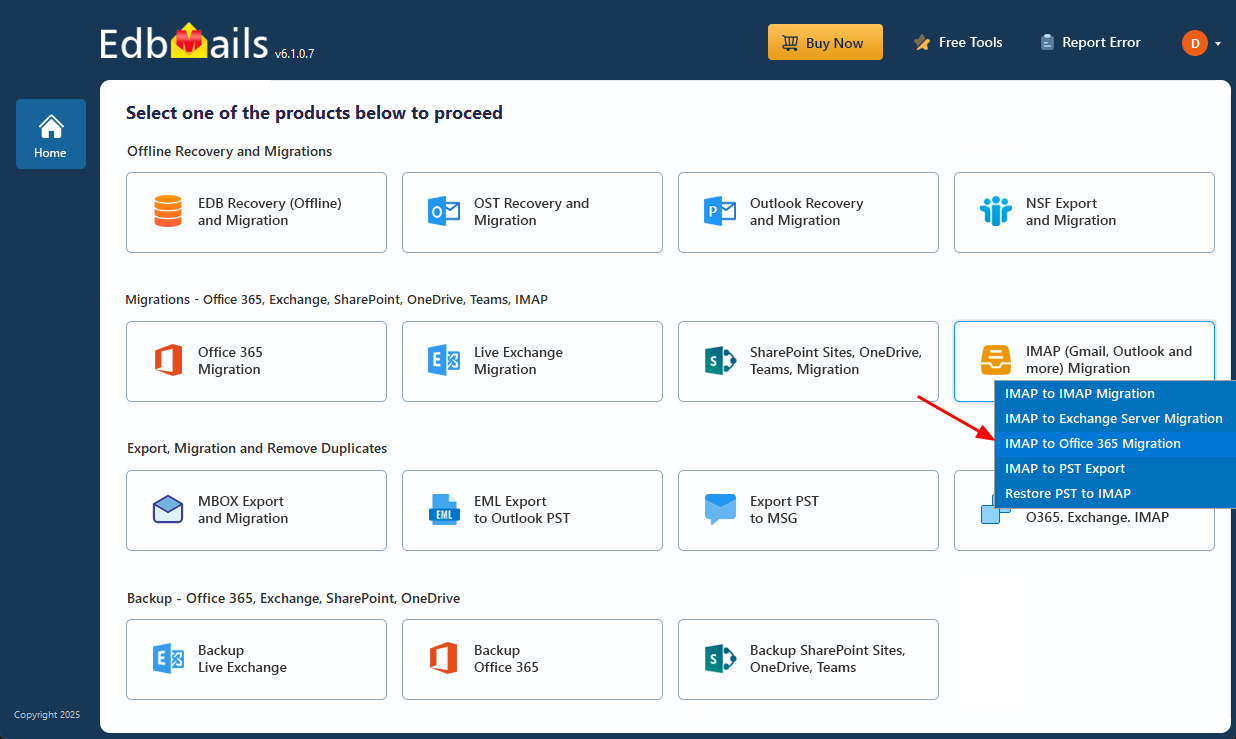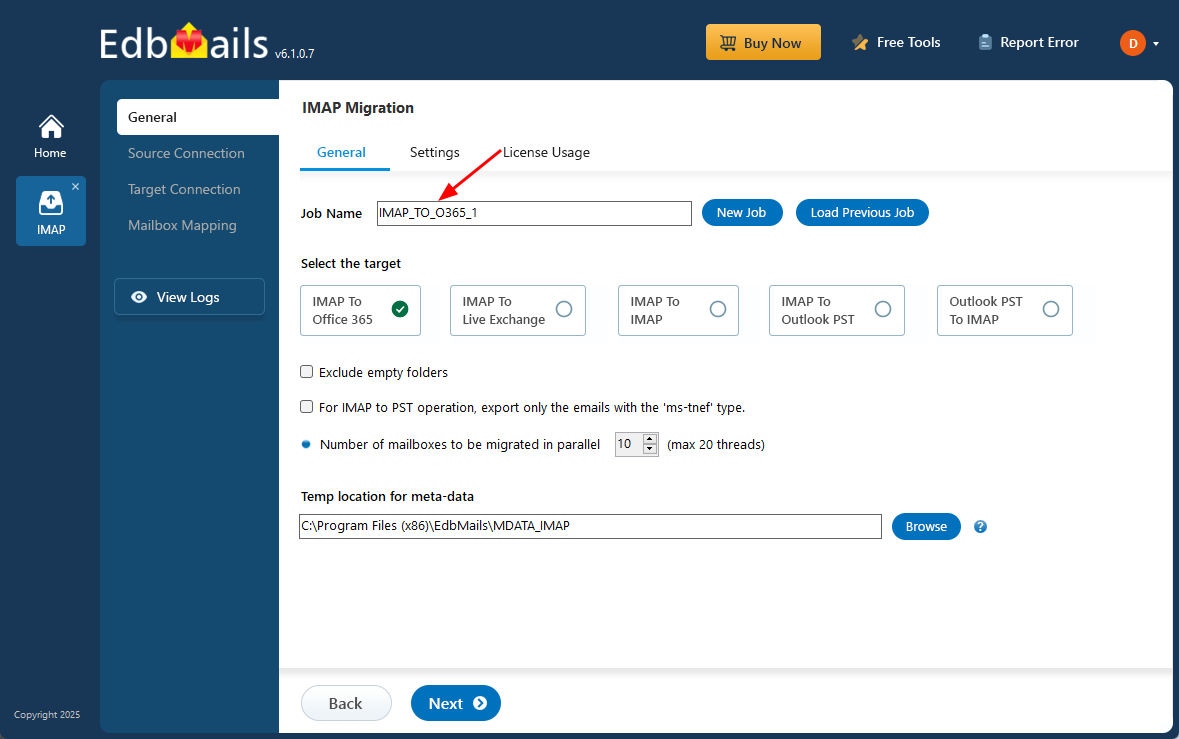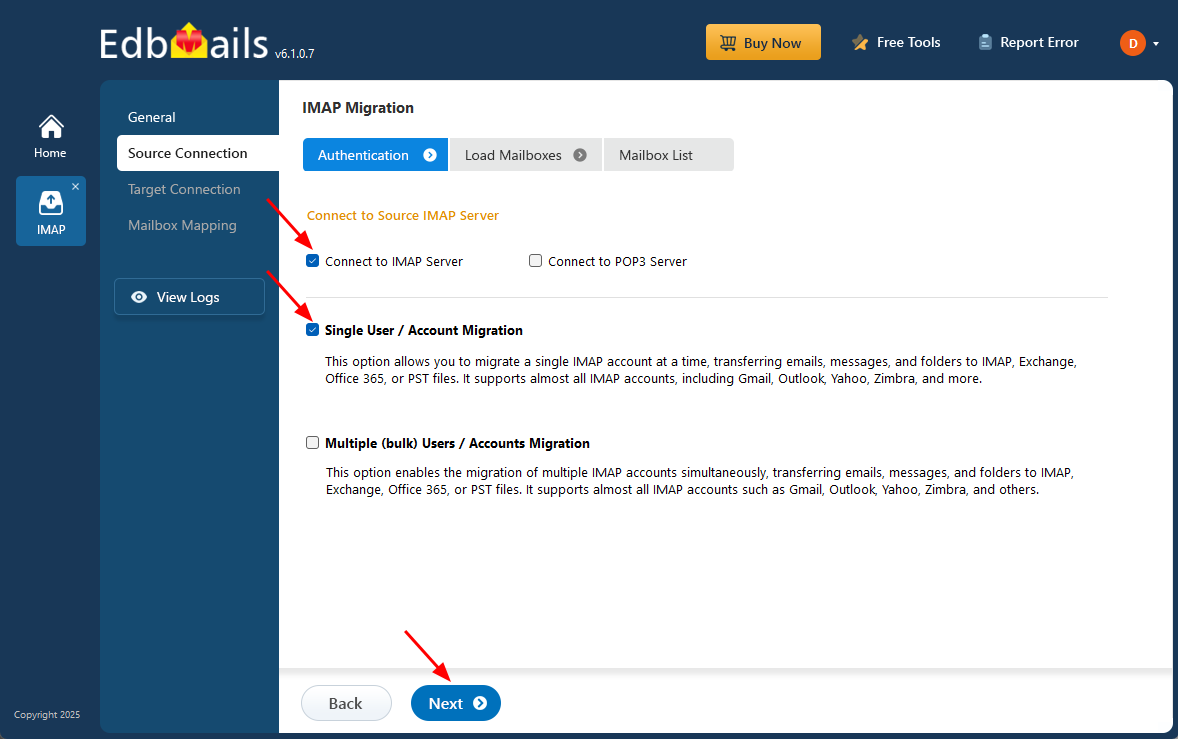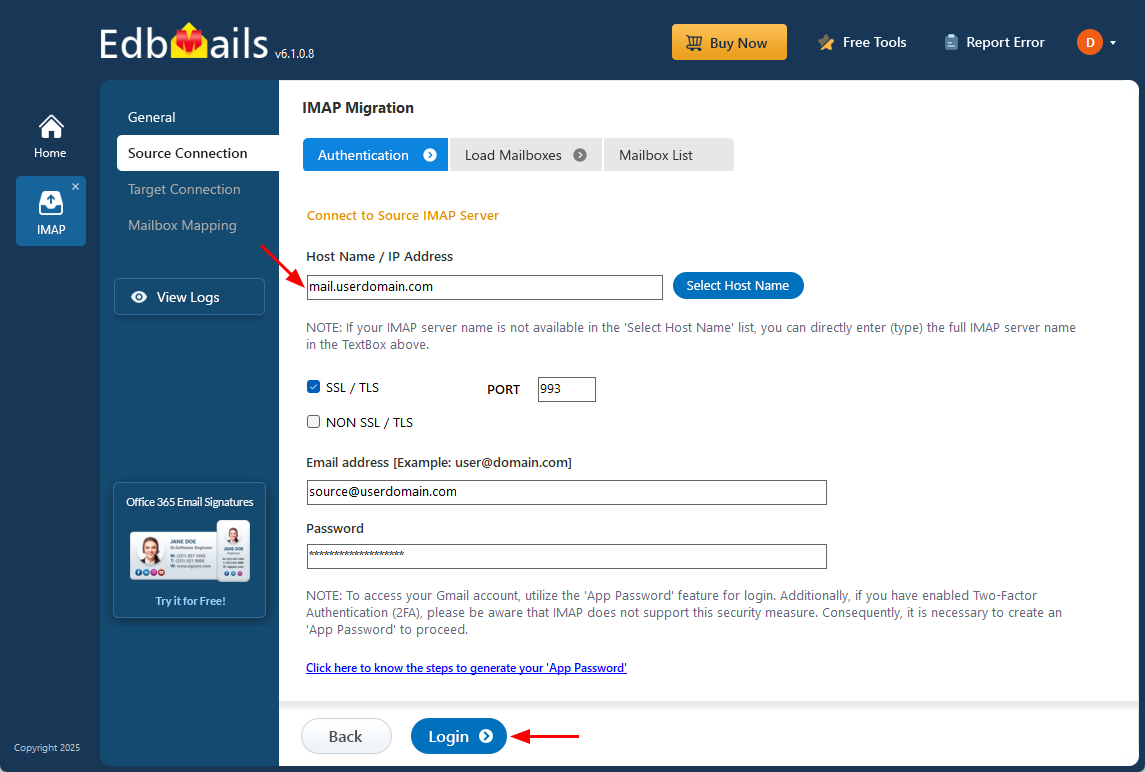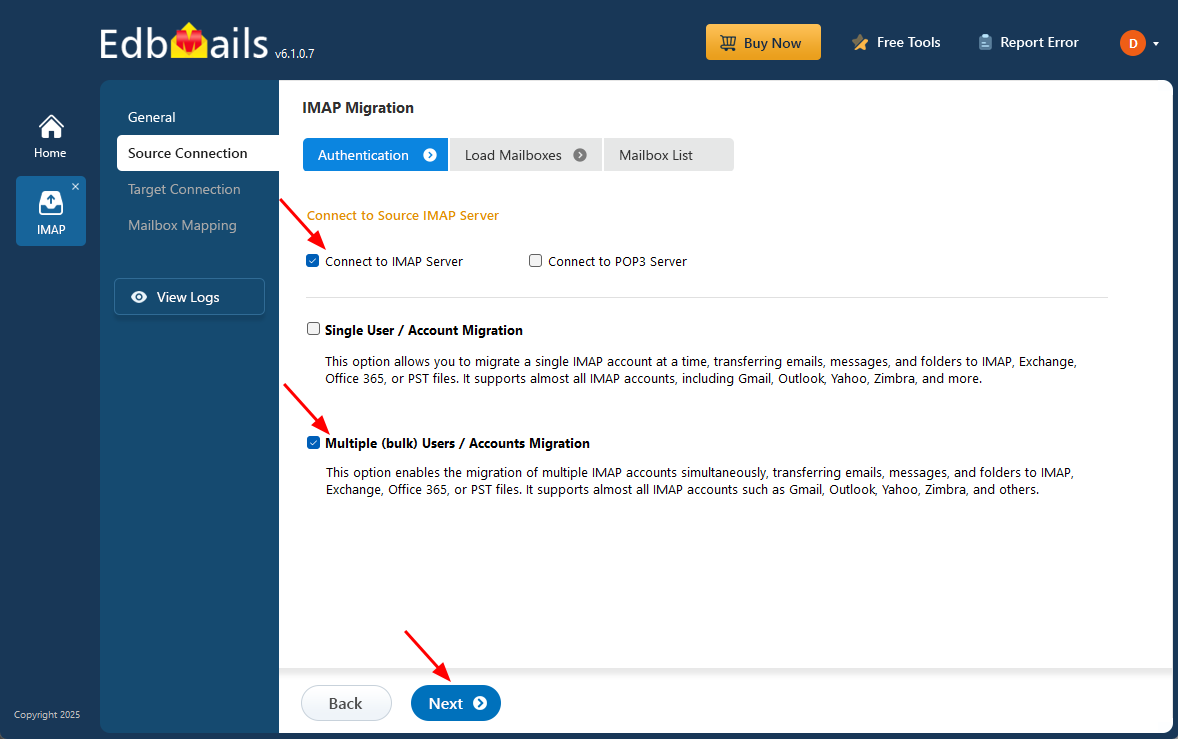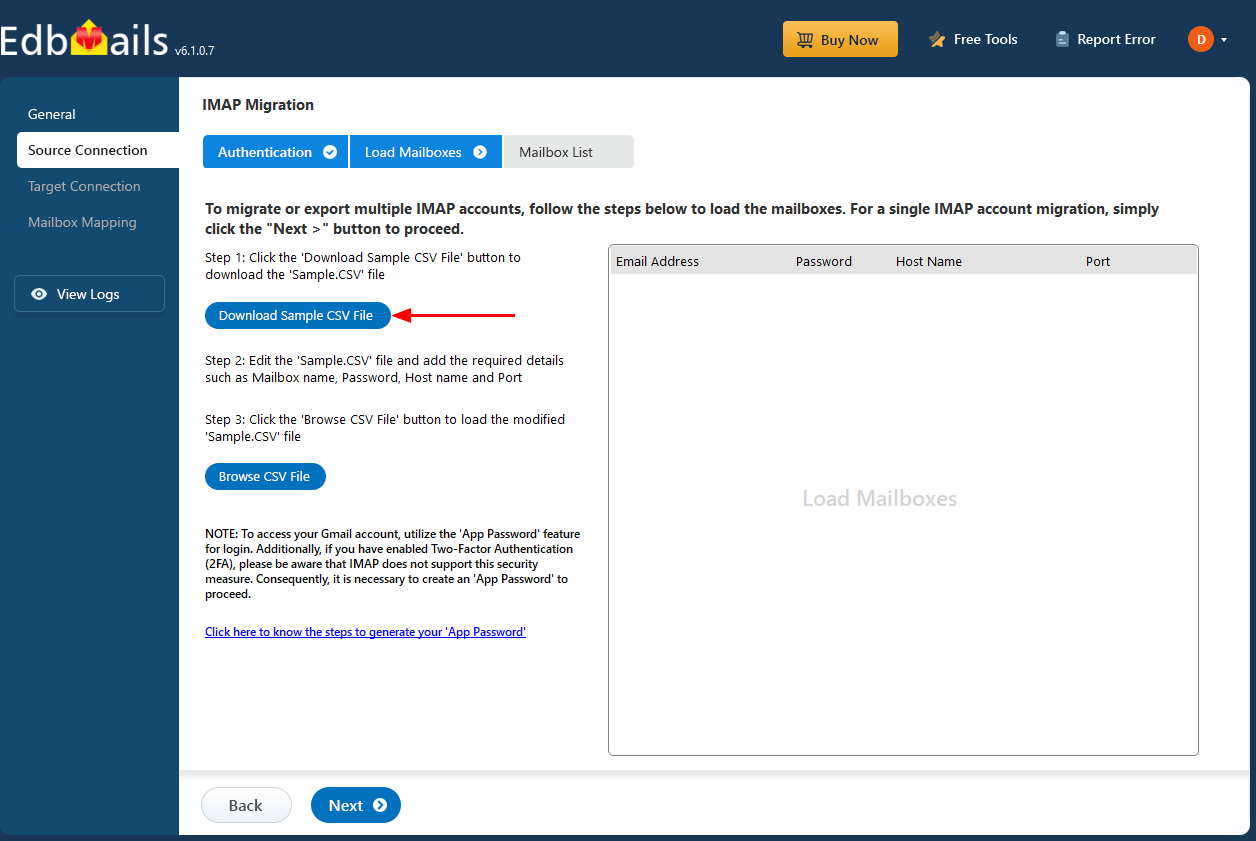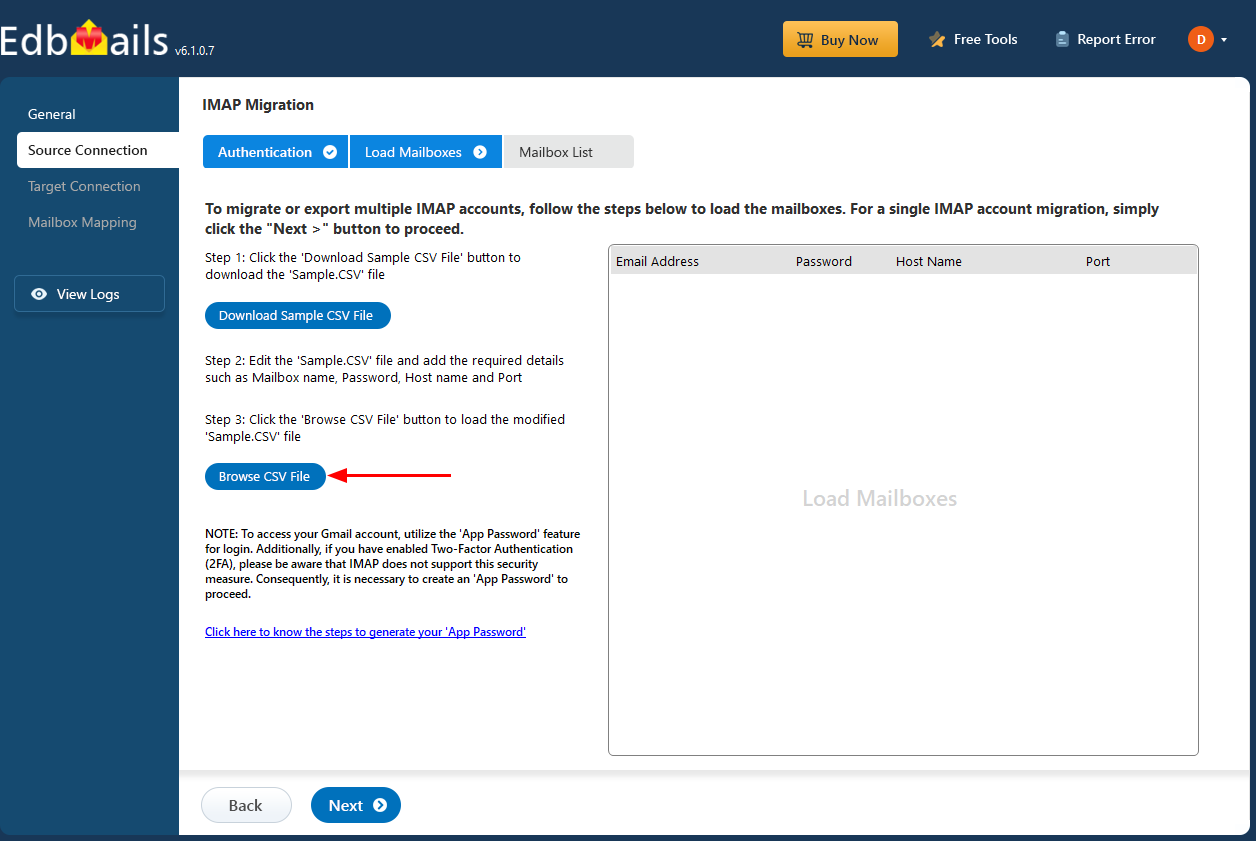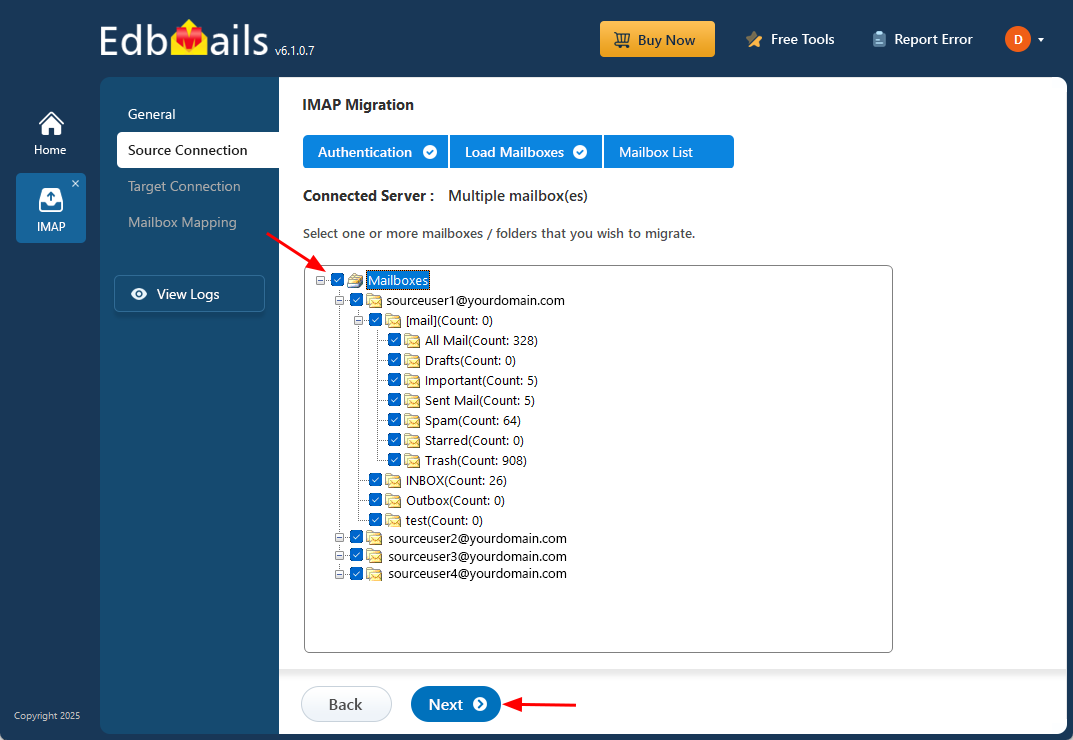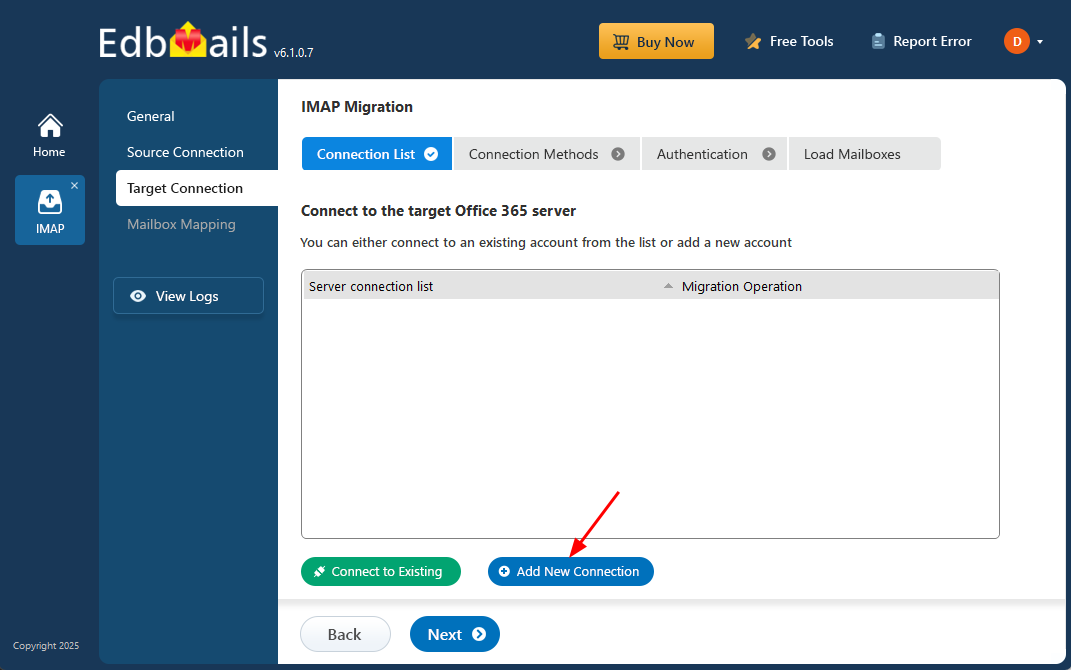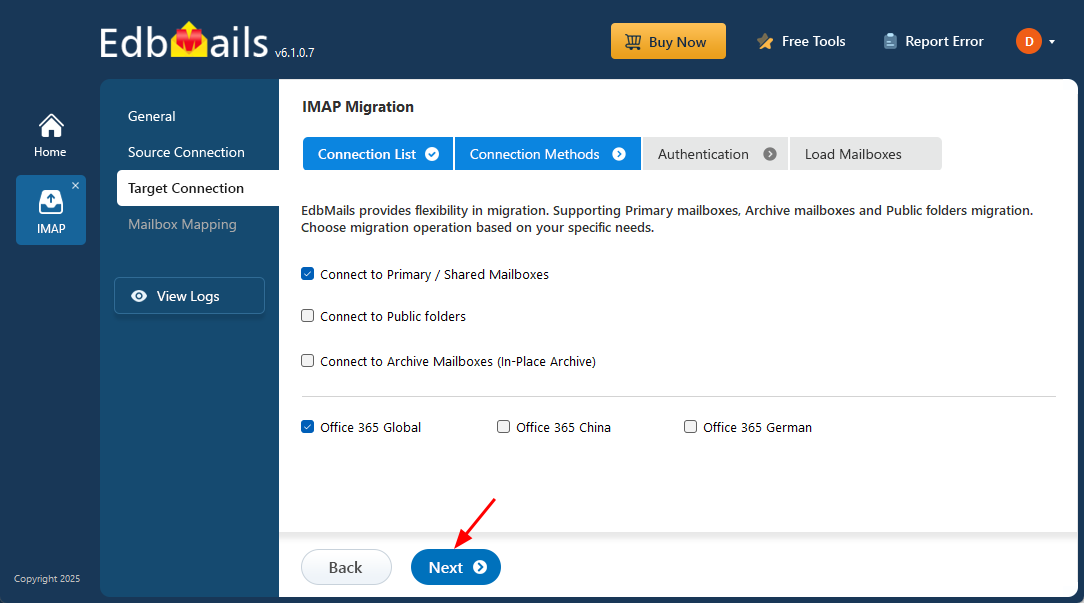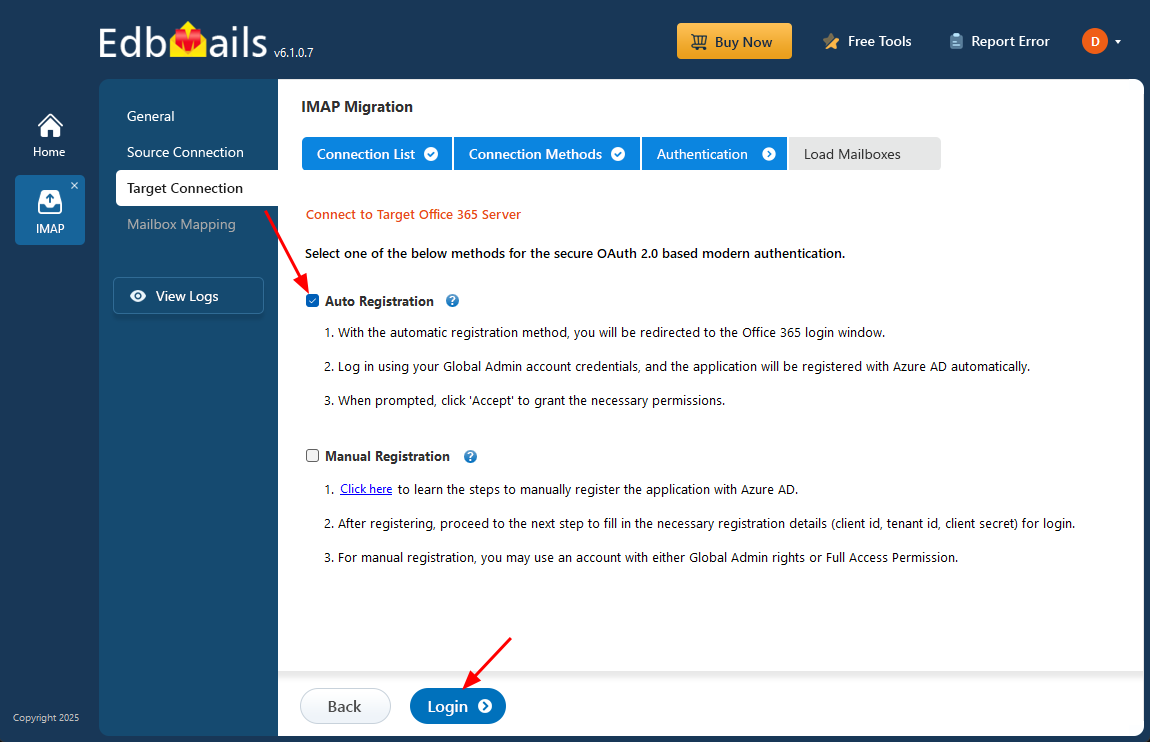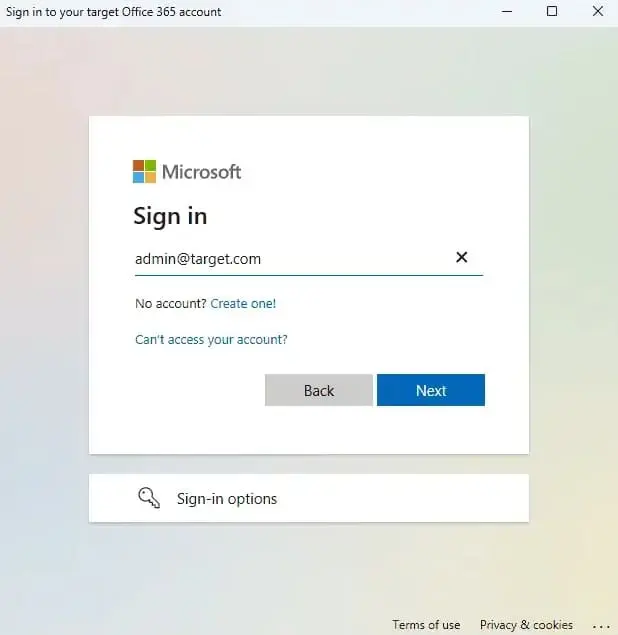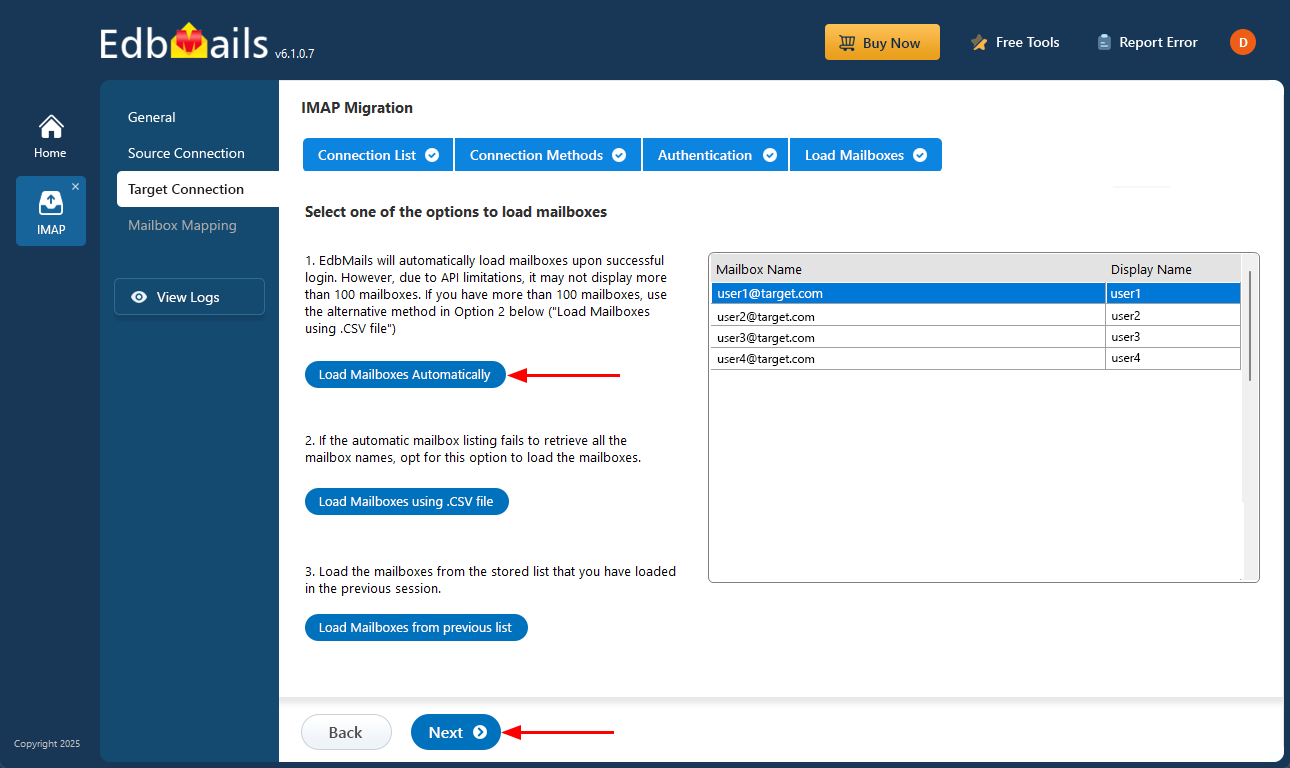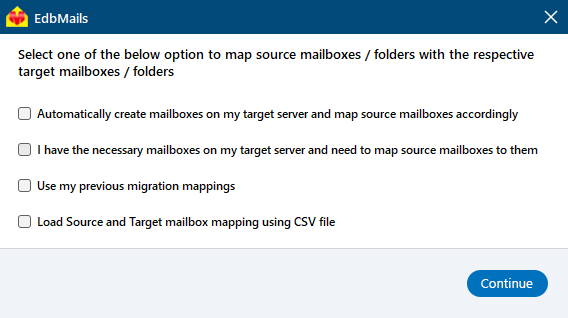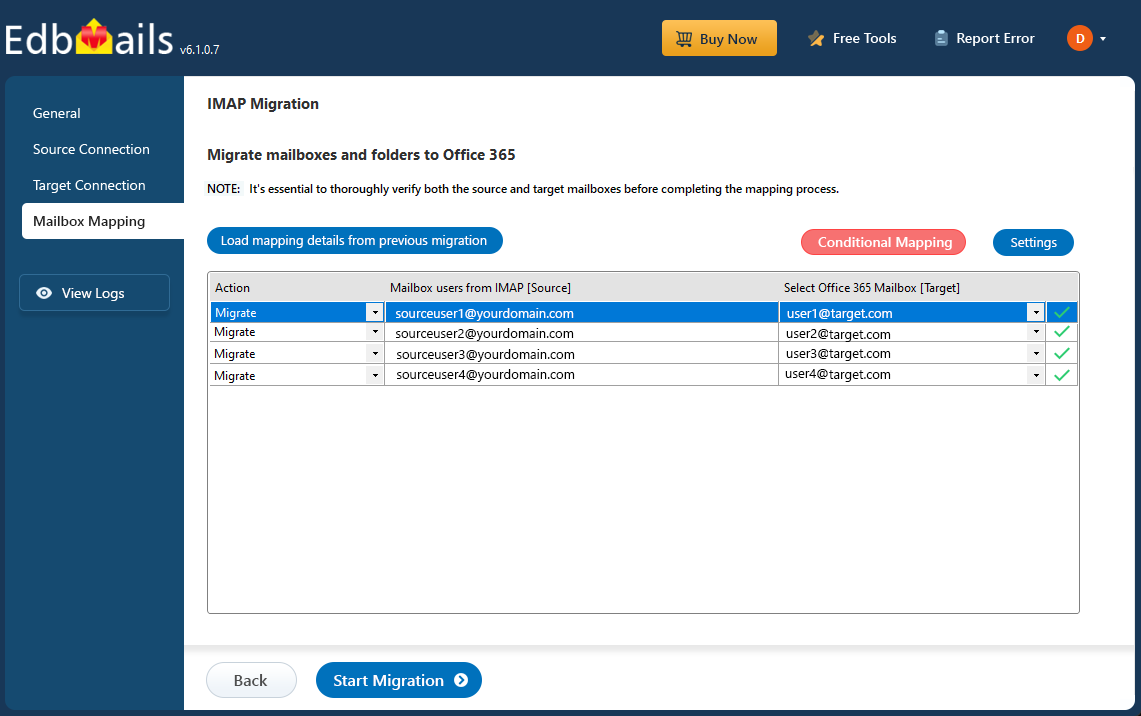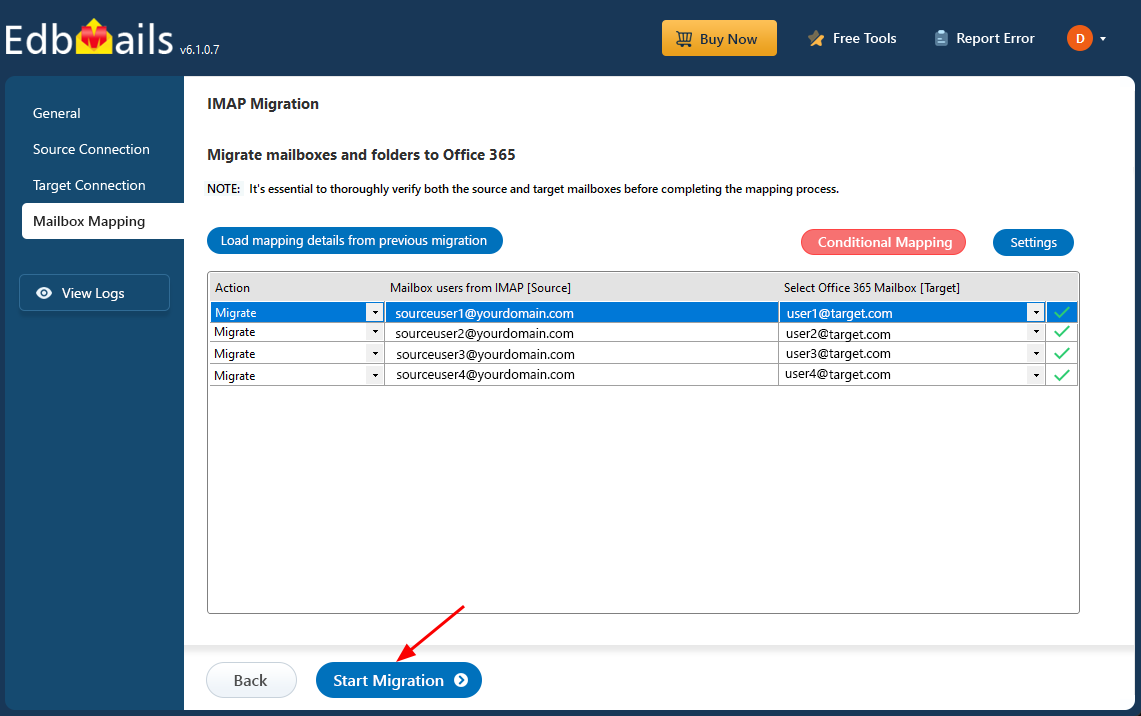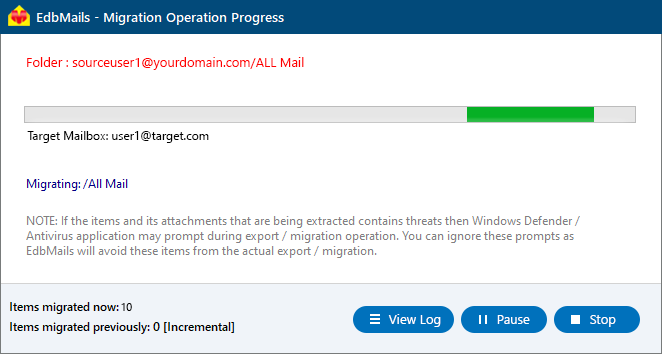Icewarp to Office 365 Migration Step by Step Guide
As organizations shift toward cloud-based platforms, many IceWarp users are moving to Microsoft 365 (formerly Office 365) to take advantage of its collaboration features, robust security, and anywhere access. Migrating from IceWarp to Office 365 offers smoother integration with Microsoft’s ecosystem, enhanced performance, and a scalable communication environment. To achieve this successfully, the migration must be planned carefully to prevent data loss, maintain business continuity, and minimize disruptions.
EdbMails IMAP Migration tool simplifies this entire process with a direct and secure migration from IceWarp to Office 365. It includes features such as incremental synchronization, simultaneous mailbox migration, customizable folder mapping, and full support for large mailboxes. With its intuitive design and step-by-step guidance, EdbMails is ideal for both small-scale and enterprise migrations
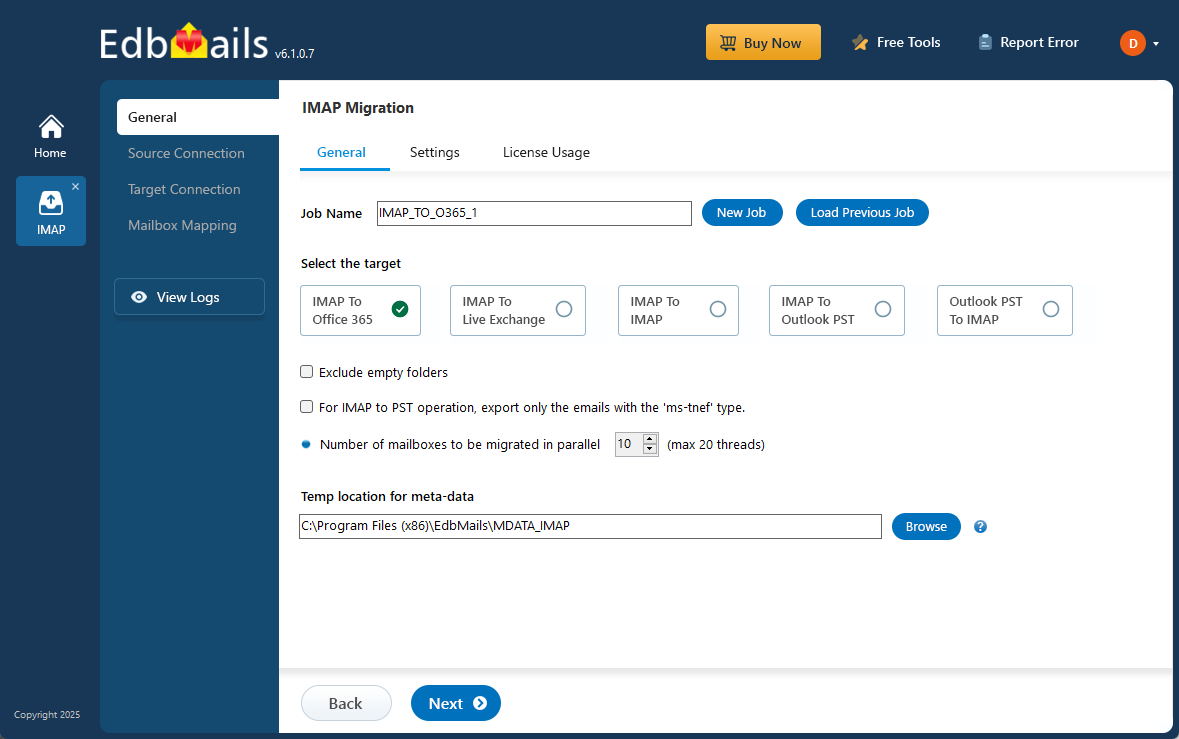
This guide provides a complete walkthrough for migrating from IceWarp to Office 365 using EdbMails. Whether you’re transferring a few accounts or handling an organization-wide move, these steps ensure a smooth, accurate, and reliable email migration experience.
What Makes Microsoft 365 a Better Choice than IceWarp Server?
- Microsoft 365 integrates seamlessly with Office apps like Word, Excel, PowerPoint, Teams, OneDrive, and SharePoint. For a smooth transition of data and collaboration tools when migrating from IceWarp, EdbMails offers a secure and efficient solution to transfer emails, and folders to Microsoft 365 without data loss.
- Microsoft 365 also supports real-time collaboration through Microsoft Teams and cloud-based document editing, allowing users to co-author and share files instantly. EdbMails preserves all essential data during migration, ensuring uninterrupted teamwork and business continuity.
- With enterprise-grade security, Microsoft 365 includes encryption, multi-factor authentication (MFA), and compliance with international standards like GDPR, HIPAA, and ISO, protecting sensitive business information.
- The platform easily scales for businesses of any size, offering flexible resource management and high performance that grows with your organization.
- Microsoft 365 includes tools like OneDrive for Business and Exchange Online Archiving for data backup and recovery.
- Leverages a vast global data center network to provide consistent, reliable service with 99.9% uptime SLAs.
- Regular feature updates, AI-powered tools, and continuous integration of new productivity applications keep businesses competitive and adaptable.
Real Challenges During IceWarp to Office 365 Migration
- Data Loss Risk – Emails, attachments, or calendar entries can be lost if the migration isn’t handled properly.
- Complex User Mapping – Manually matching IceWarp users to Office 365 accounts can lead to errors, especially in large organizations.
- Folder Structure Mismatches – Differences in folder hierarchies may result in disorganized mailboxes post-migration.
- Large Mailbox & Attachment Issues – Migrating emails with large attachments or very large mailboxes can slow down or fail.
- Custom Rules and Filters – Replicating IceWarp mailbox rules, filters, or categories in Office 365 is often difficult.
- Bandwidth and Performance Bottlenecks – Large-scale migrations can strain network resources, affecting server performance.
- User Downtime – MX record updates or Outlook configuration may cause temporary email access disruption.
- Post-Migration Verification – Extensive testing is needed to ensure all emails, folders, and attachments migrated correctly.
- Security and Compliance Concerns – Sensitive data must be handled carefully to meet GDPR, HIPAA, and internal compliance standards.
- Coexistence Issues – Running IceWarp and Office 365 simultaneously can create synchronization issues and duplicates.
Best way to migrate emails from IceWarp to Office 365
EdbMails IMAP migration tool, a Microsoft-partnered solution, simplifies the migration from IceWarp to Office 365 by eliminating the complexities of manual migration. Its easy-to-use interface lets you connect to the source server, select mailboxes, and migrate emails, folders, and attachments in just a few steps.
The tool tackles common migration challenges with incremental migration, automatic mailbox mapping and creation, preservation of folder hierarchy and data integrity, and support for large mailboxes and attachments. Advanced filters allow selective migration, while incremental sync ensures only new or updated items are transferred, avoiding duplicates.
With OAuth 2.0 authentication and TLS encryption, EdbMails keeps your data secure throughout the migration process. By combining automation, flexibility, and security, it delivers a fast, accurate, and stress-free IceWarp to Office 365 migration with minimal downtime.
IceWarp to Office 365 migration planning
Planning is an important step before starting your IceWarp to Office 365 migration. Setting up the environment properly in advance helps reduce risks and prevent data loss. Below is a checklist of key points to consider before beginning the migration.
- Determine the size of the data and number of mailboxes you want to migrate.
- Make a list of all the data and permissions from IceWarp that you want to transfer.
- Create appropriate user mailboxes on Office 365 and assign licenses to them.
- Ensure you have enough network capacity and bandwidth to migrate.
- Communicate the migration plan and flow to your end users.
IceWarp to Office 365 migration prerequisites
- Locate the IMAP server hostname for your IceWarp server. You can find this information in the server settings or by configuring your IceWarp email account in Outlook and checking the incoming mail server details.
- Before migrating IceWarp to Office 365, make sure all user mailboxes are created on the target server. You can use EdbMails to automatically create Office 365 mailboxes and assign licenses during the migration. If you prefer to handle this manually, follow the official Microsoft guides to create mailboxes and assign the appropriate licenses:
- If you plan to migrate the source Public folders to Public folders on Office 365, ensure that you create and configure the Public folder mailboxes on the target server.
- Ensure that the admin account on the target Office 365 server has the impersonation rights to migrate mailboxes and Public folders.
- If you have a custom email domain from your hosting provider to which you want to migrate and receive emails, you must add and verify the domain on Office 365.
Steps to add a custom domain to Office 365 and Steps to add DNS records to connect your domain.
- Configure Office 365 to send and receive large messages.
Follow the steps to increase the message size on Office 365 to 150MB and see tips to optimize IMAP migration to Exchange online.
Steps to migrate IceWarp to Office 365 using EdbMails
Step 1: Download and install EdbMails IMAP migration software setup
- Download EdbMails and install the EdbMails software on your computer.
- Launch the application and login with your registered email address and password or click 'Start Your Free Trial'.
See a detailed list of EdbMails system requirements for IMAP migration.
- Select the option‘IMAP (Gmail, Outlook & more) Migration’
- Select ‘IMAP to Office 365 Migration’
- Use the default job name or click 'New Job' to modify the job name
Step 2: Connect to source IceWarp server
- To connect a single user account, select ‘Single User / Account Migration’ and click ‘Next’ to proceed.
- Select the suitable IMAP host name from the list or enter it manually. Then, provide your email address and password.
- Click the ‘Login’ button.
- For migrating multiple mailboxes, select ‘Multiple (Bulk) Users/Accounts Migration’ and click ‘Next’.
- Click ‘IMAP Migration CSV File’
- Update the CSV file by adding the necessary details like email address, password, host name, and port number. Once done, save the file.
- Close the CSV file, click the 'Load Modified CSV File' button, and select the updated file.
- Verify the mailboxes, and click 'Next'.
- Select the mailboxes or folders to migrate, then click ‘Next’.
Step 3: Connect to target Office 365
- Click the ‘Add New Connection’ button to create a new connection to your target Office 365 server. To use an existing connection, simply select it from the list and click ‘Connect to Existing’ to continue.
- Select the required connection options and click the ‘Next’ button.
- Select one of the authentication methods.
- Click the ‘Login’ button to continue.
- Authenticate on Microsoft sign-in page.
- Choose a method to load your mailboxes. EdbMails automatically loads the mailboxes for your Office 365 users. However, due to Microsoft API limitations, only 100 mailboxes will be shown. If you have more than 100 mailboxes, you can use the CSV file method to load all of them.
- Click the ‘Next’ button to continue
Step 4: IceWarp to Office 365 mailboxes mapping
- Select the required mapping option
- With EdbMails, you can choose to have the software automatically create mailboxes on the target server, or if the mailboxes are already created, simply select the appropriate option.
- EdbMails automatically maps mailboxes between the source and target servers, but you also have the option to manually map mailboxes.
Step 5: Start IceWarp to office 365 migration
- After mapping the mailboxes, click the ‘Start Migration’ button to initiate the migration process
- You can now track the migration progress using the progress bar. When the migration is complete, EdbMails will display a confirmation message
- Click the ‘View Log’ button to open the migration report, which provides a detailed summary of the entire process, including the total number of items migrated from each folder.
Icewarp to Office 365 post migration tasks
- Step 1: Update the MX records to point to Office 365
Update the MX records to route incoming emails to your target Office 365 server. Also, set up the Autodiscover record to allow Outlook to connect to the migrated mailboxes easily.
- Step 2: Create a new Outlook profile for users in the new domain
Configure the Outlook profile for each user in your domain if Outlook has problems connecting to Office 365 mailboxes.
- Step 1: Update the MX records to point to Office 365
IceWarp to Office 365 migration troubleshooting
For troubleshooting, visit Knowledge Base.
For more queries, check , Frequently Asked Questions or contact support.
EdbMails for IceWarp to Office 365 migration - Advantages
- Incremental and no-duplicate migration
EdbMails supports incremental migration. This feature ensures that only new or modified email items are transferred during each migration session, preventing the re-migration of already transferred data. It helps save time, reduces server load, and ensures that only the latest changes are moved to the target Office 365 account.
- Advanced include and exclude filters
Customize your migration with EdbMails using powerful filters and folder settings. You can select emails based on Date, Sender Address, Subject, or Attachments, and exclude specific folders such as Junk, Drafts, or Conversation History to suit your migration requirements.
- Easy and direct migration operation
Unlike complex manual methods, EdbMails performs a direct one-to-one migration from IceWarp to Office 365. There are no intermediate steps, making the process faster and more reliable.
- Exact folder hierarchy and data formatting
EdbMails ensures that your source mailboxes, folder structure, and data formatting remain intact during migration, with no changes made to either the source or the target. After the migration, all your emails and folders will appear on the target exactly as they were on the source, maintaining their original structure and format.
- Free trial with 24x7 customer support
If you'd like to try the IceWarp migration process yourself, simply download the free trial version of EdbMails. Our 24/7 customer support is also available to guide you through the entire process and assist you step by step, ensuring a smooth experience.
Learn more about EdbMails IMAP migration features

